-
CLICK HERE To Join Broke Straight Boys & Instantly Get Full Access To Entire Site & 3 FREE bonus sites.
You are using an out of date browser. It may not display this or other websites correctly.
You should upgrade or use an alternative browser.
You should upgrade or use an alternative browser.
What's Life Like in New York City?
- Thread starter tampa24
- Start date
I hadn’t but my sister-in-law and her niece had. It was Mediterranean food and it was delicious. I googled a pic of the interior and a sample of the dips which we all shared.
View attachment 75062
View attachment 75063
View attachment 75064
Very nice. Thanks!
mikeyank
Long time forumite
Thank you andVery nice. Thanks!
 back Tampa!
back Tampa!Thanks. I've just been quite busy in the non-virtual world trying to be extra productive and get some stuff accomplished.
Just tell us when you know so we won't worry, Tampa.
mikeyank
Long time forumite
Late Sunday afternoon I went on one of my organized walks through the neighborhoods of New York City. We started at the north end of Central Park attending one of the free Sunday concerts overlooking the Harlem Meer and then we proceeded through the southern part of Harlem up to 125th Street with visits to Morningside Park, Mount Morris Park and the historic buildings and churches that give Harlem it’s unique place in New York City history and culture. Here are some pics I took yesterday of our journey.
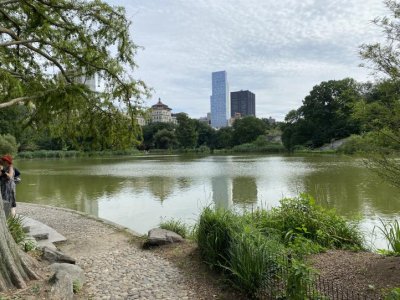
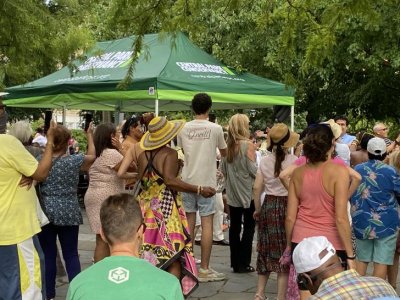
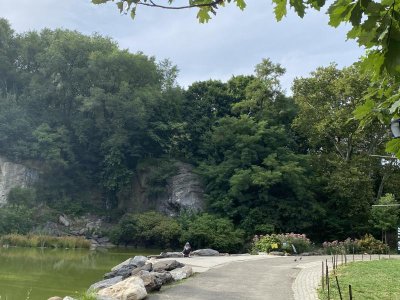
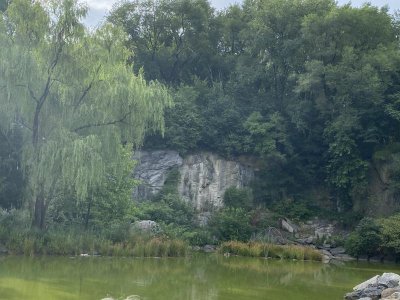
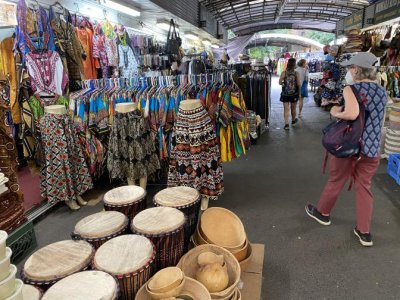







mikeyank
Long time forumite
Thank you, Tampa!Beautiful. Thank you!

mikeyank
Long time forumite
I love seeing the buildings in New York City as they were in the past. The Brooklyn Heights Blog this week showed pictures of a building at 151 Montague Street, which has always been the main commercial strip in the neighborhood.
February 24, 1916
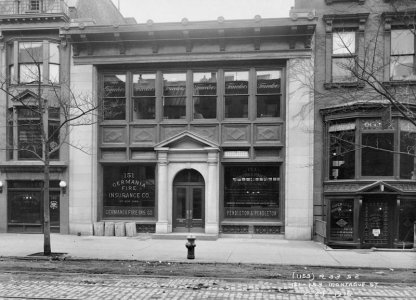
1940

And I took this one today, August 4, 2022
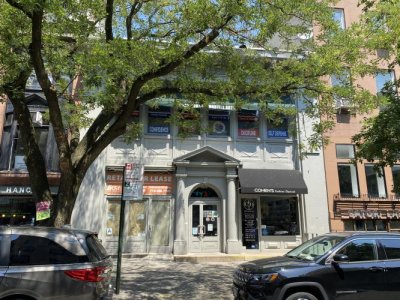
Same structure at three different points in time over the last 106 years. Pretty cool!
February 24, 1916

1940

And I took this one today, August 4, 2022

Same structure at three different points in time over the last 106 years. Pretty cool!
I love seeing the buildings in New York City as they were in the past. The Brooklyn Heights Blog this week showed pictures of a building at 151 Montague Street, which has always been the main commercial strip in the neighborhood.
February 24, 1916
View attachment 78906
1940
View attachment 78907
And I took this one today, August 4, 2022
View attachment 78908
Same structure at three different points in time over the last 106 years. Pretty cool!
Wow. It had a strong history of insurance commerce. Now it's a martial arts studio, an eye glass store, and another street-level business TBD. haha
mikeyank
Long time forumite
Thanks Tampa. I love checking out old structures like that store over 106 years ago. The building I live in was built in 1850, one hundred seventy two years ago. I’d love to see pictures of my building and especially the inside of my apartment in 1850. I wonder what kind of furniture, plumbing and lighting the apartment had. And how did the tenants dress and live their lives. Most interesting stuff to me.Wow. It had a strong history of insurance commerce. Now it's a martial arts studio, an eye glass store, and another street-level business TBD. haha
mikeyank
Long time forumite
I’ve been to the Tenement Museum on Orchard Street in lower Manhattan. It is in two actual building that were a tenement.Thank you, Mike, for those pictures but there was also the ugly, seamy side where new immigrants & the poor were housed in slum tenements, least we not forget them.
From Wikipedia :
“ The Museum's two historical tenement buildings were home to an estimated 15,000 people, from over 20 nations, between 1863 and 2011The museum, which includes a visitors' center, promotes tolerance and historical perspective on the immigrant experience.”
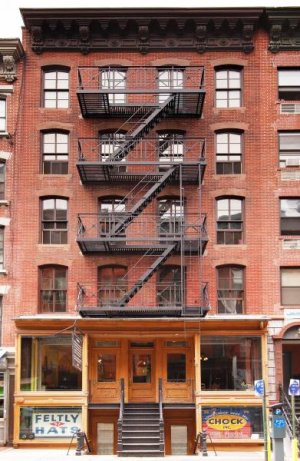

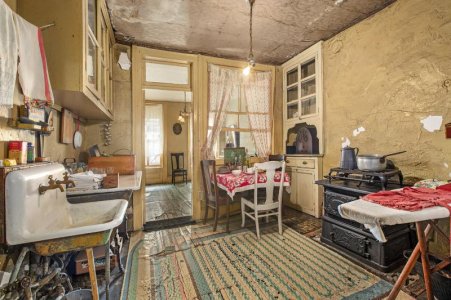
The above pic seems to have running water but from what I saw, The higher the floor, the cheaper the rent as people had to carry water up the steps in the early days and the bathrooms were outhouses in the back yard.
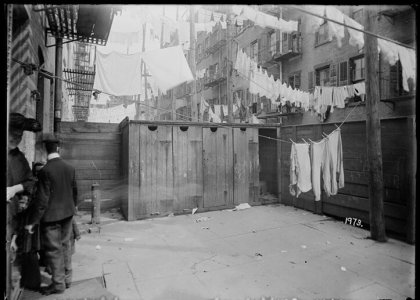
Thanks Tampa. I love checking out old structures like that store over 106 years ago. The building I live in was built in 1850, one hundred seventy two years ago. I’d love to see pictures of my building and especially the inside of my apartment in 1850. I wonder what kind of furniture, plumbing and lighting the apartment had. And how did the tenants dress and live their lives. Most interesting stuff to me.
I know. In a place with so much history you wish you could step into a time machine and see how your previous neighbors lived their lives. I've often had that fantasy myself.
mikeyank
Long time forumite
We all look at life through our own individual prisms. For me visiting the Tenement Museum is not showing “the ugly side”, but rather is a tribute to the brave immigrants who came to this country to make a better life for themselves and their families. I think it is a beautiful tribute to these folks.Thank you for showing the ugly side. It remined me of where I lived.
From the museum’s website,
https://www.tenement.org/
“ The Tenement Museum celebrates the enduring stories that define and strengthen what it means to be American. We share stories of the immigrant and migrant experience through guided tours of our two tenement buildings on Orchard Street and the surrounding neighborhood on the Lower East Side of Manhattan. Visitors can take building tours of the recreated homes of our former residents between the 1860s and the 1980s as well as walking tours of the neighborhood they lived in.”
One of the inspiration tours is this one:
“Visit the tenement homes of the Epstein and Saez Velez families in the 1950s and 1960s. Explore what life was like for Jewish Holocaust survivors and Puerto Rican migrants in a neighborhood becoming more racially and culturally diverse.”
The nationalities of the immigrants have changed from Irish, Italian, Jewish to Puerto Rican, and so many others but the experiences were all similar. I highly recommend visiting this piece of living history in lower Manhattan.
mikeyank
Long time forumite
I know. In a place with so much history you wish you could step into a time machine and see how your previous neighbors lived their lives. I've often had that fantasy myself.

One thing from a historical context that stood out to me was that before indoor plumbing really took hold, people would complain about the smells of urine all over the major cities of the developing world. Employees would leave their previous time's equivalent of cash registers, tills or workshop trades and just step outside to find any discrete corner, wall, tree, bush, puddle...and just do their business. Plus you had people in upper story buildings tossing the contents of their chamber pots out the nearest window. And hopefully not landing the contents directly on passers-by on the sidewalks. Horse manure in the streets too. It was quite the human waste minefield. haha Little wonder why there are those who say that plumbers were the real heroes who brought true civilization to the modern world.
Last edited:
mikeyank
Long time forumite
Very true Tampa. The invention of the automobile and later the subway helped clean the streets of horse manure which was prevalent as horses were the primary means of transportation before that. And the aqueduct system of pumping fresh water from upstate.One thing from a historical context that stood out to me was that before indoor plumbing really took hold, people would complain about the smells of urine all over the major cities of the developing world. Employees would leave their previous time's equivalent of cash registers, tills or workshop trades and just step outside to find any discrete corner, wall, tree, bush, puddle...and just do their business. Plus you had people in upper story buildings tossing the contents of their chamber pots out the nearest window. And hopefully not landing the contents directly on passers-by on the sidewalks. Horse manure in the streets too. It was quite the human waste minefield. haha Little wonder why there are those who say that plumbers were the real heroes who brought true civilization to the modern world.
From Wikipedia.
https://en.wikipedia.org/wiki/Highbridge_Reservoir
“Highbridge Reservoir was a reservoir in the New York City water supply system, which received water from a portion of the Croton Aqueduct system.[1] It was located on Amsterdam Avenue between 172nd Street and 174th Street, in Upper Manhattan adjacent to the High Bridge Water Tower and the High Bridge across the Harlem River Valley. The reservoir covered about 7 acres (28,000 m2), was 16 feet (4.9 m) deep, and had a total capacity of 10,794,000 US gallons (40,860,000 L).[2]”
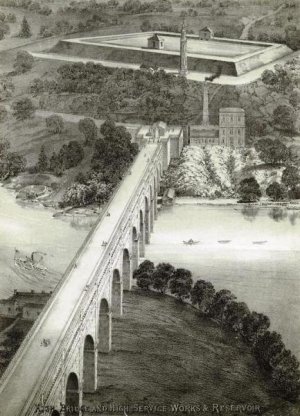
An overview from 1871 showing the High Bridge, the High Bridge Water Tower and the Highbridge Reservoir
This is a painting of the Highbridge in 1844.
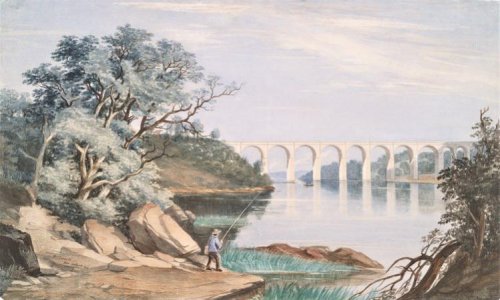
The Highbridge is no longer used to transport water, but was renovated and reopened by New York City in 2021 and one of the more interesting walks I took in recent years started in the Highbridge section of The Bronx and we walked across into the park in Washington Heights.
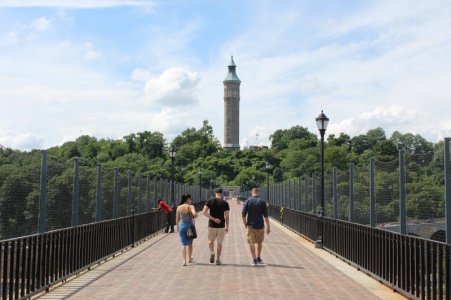
I love New York City history and being able to go to the places and walk around and see them for myself today. I love living in New York City.

Similar threads
- Replies
- 8
- Views
- 866
- Replies
- 5
- Views
- 1K












